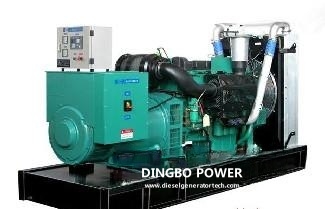For a home or business owner, purchasing a generator is usually a major investment. It is also something most consumers don't do often, so there is a lot of confusion about which fuel type to use (diesel, natural gas, propane), which brand is best (Caterpillar, Cummins, MTU, Generac, Kohler, HIPOWER), and most specifically, what size generator is appropriate.
The generator supplier will help you understand how to determine the size of generator you need.

You should already know what type of generator you need. If you are a homeowner looking for a backup or standby power source, you need a small portable generator or a stationary standby generator. These range in size from 2kW-2000 watts or less for recreational units to about 50kW for whole house standby generators. These generators typically use single-phase current, which is sufficient to power small devices that do not require constant high voltage power.
Industrial generators are available in a wide range of sizes from about 20kW to well over 3MW. larger commercial and industrial applications obviously require greater capacity, so three-phase motors are often used to obtain higher power. Office buildings, manufacturing facilities, data centers, and complexes such as shopping centers, educational institutions, and lifestyle centers all require larger capacity generators. This is true for both main power and emergency backup generation.
The basic generator sizing formula is as follows.
Form a list of all items that will be powered. Determine the starting wattage (the amount of energy needed to turn it on) and the operating wattage (the amount of energy needed to run it) for each unit. These numbers are usually engraved somewhere on the device itself and recorded in the user manual. Calculate your total power requirements by adding up these kW or KVA numbers.
For devices that are measured in amps, you can convert amps to watts using the following formula.
For resistive loads (the most common type): Wattage = Amps x Volts For reactive loads: Wattage = Amps x Volts x Load Factor.
The load factor is the ratio of your electrical energy usage (kWh) to your peak demand (kW). You can calculate it by looking up the data in your utility bill and using it in the following formula.
Total kWh for the previous month / (your peak demand for the period x 30 days x 24 hours)
Saving on generator size can be tempting, especially since doing so may save you thousands of dollars. However, choosing a generator that is too small for your application can lead to disaster. Not only will you damage the appliances and equipment that are powered from the generator, but you will also damage the generator itself.
Longer generator life
Stable production performance capacity
Limited incidence of overload accidents
Limited incidence of system failure
Reduced likelihood of asset damage
Increased personnel safety Reduced overheating
Guangxi Dingbo Generator Set Manufacturing Co.,Ltd. as the leading manufacturer of diesel generator set, we specialize in producing, assembly, testing, installation, commissioning, sale and maintenance of the diesel genset. We have CE,ISO,CQC certificate, and also have independent import and export right. Welcome to contact us today or request a quote.
Copyright © Guangxi Dingbo Generator Set Manufacturing Co., Ltd. All Rights Reserved | Sitemap
Update cookies preferences